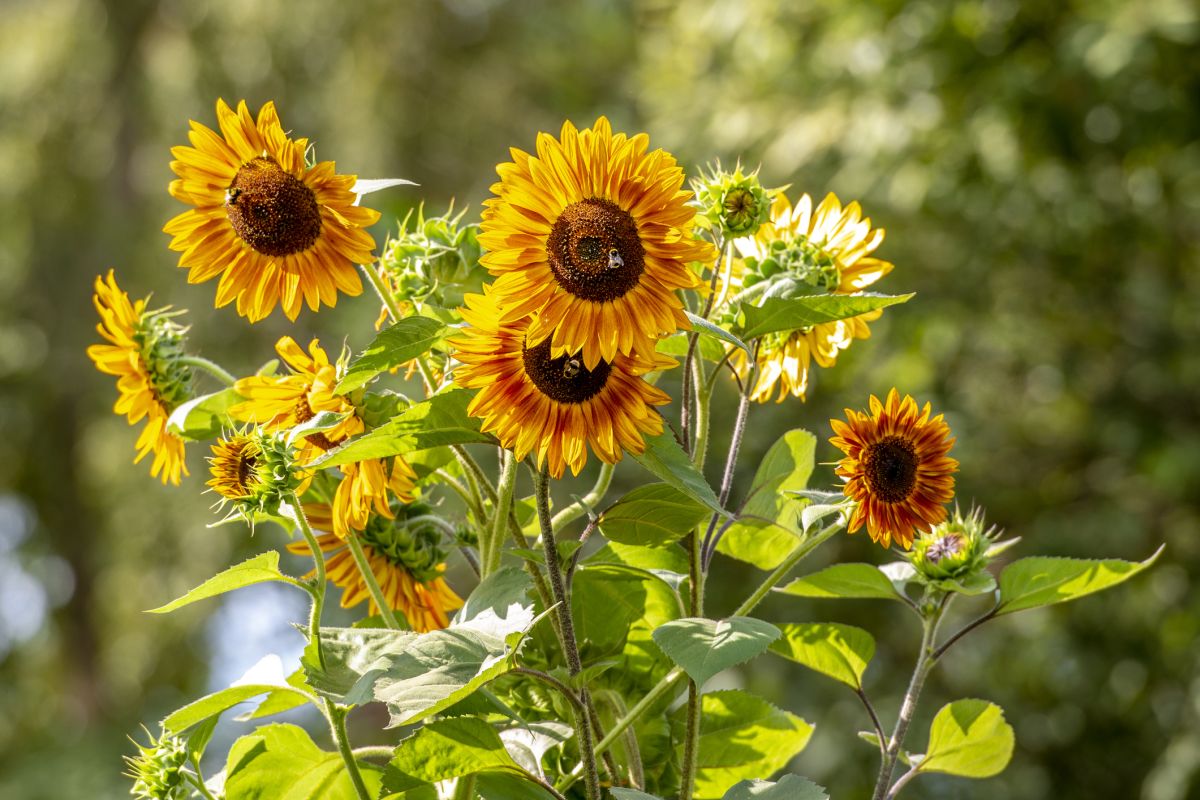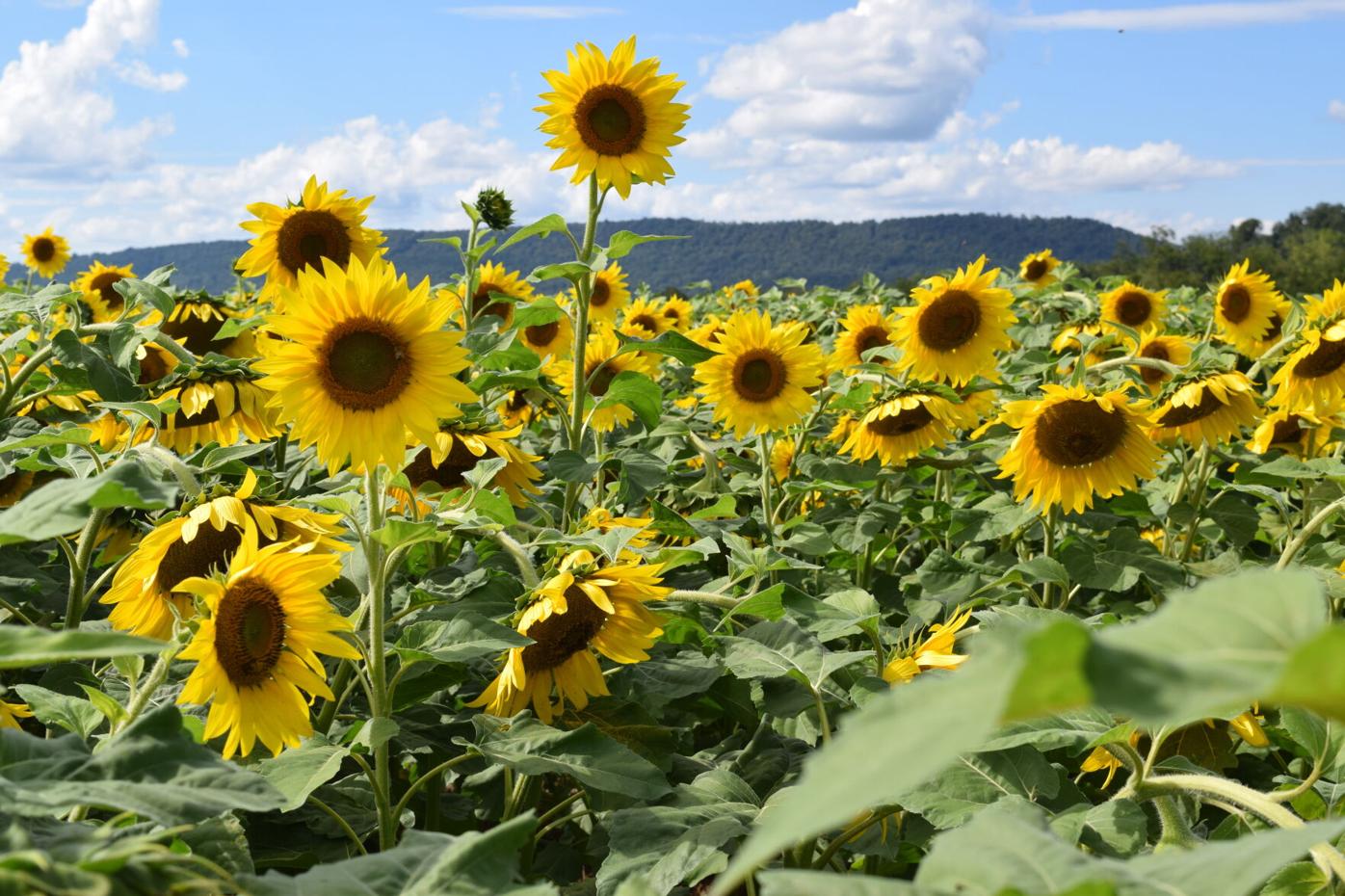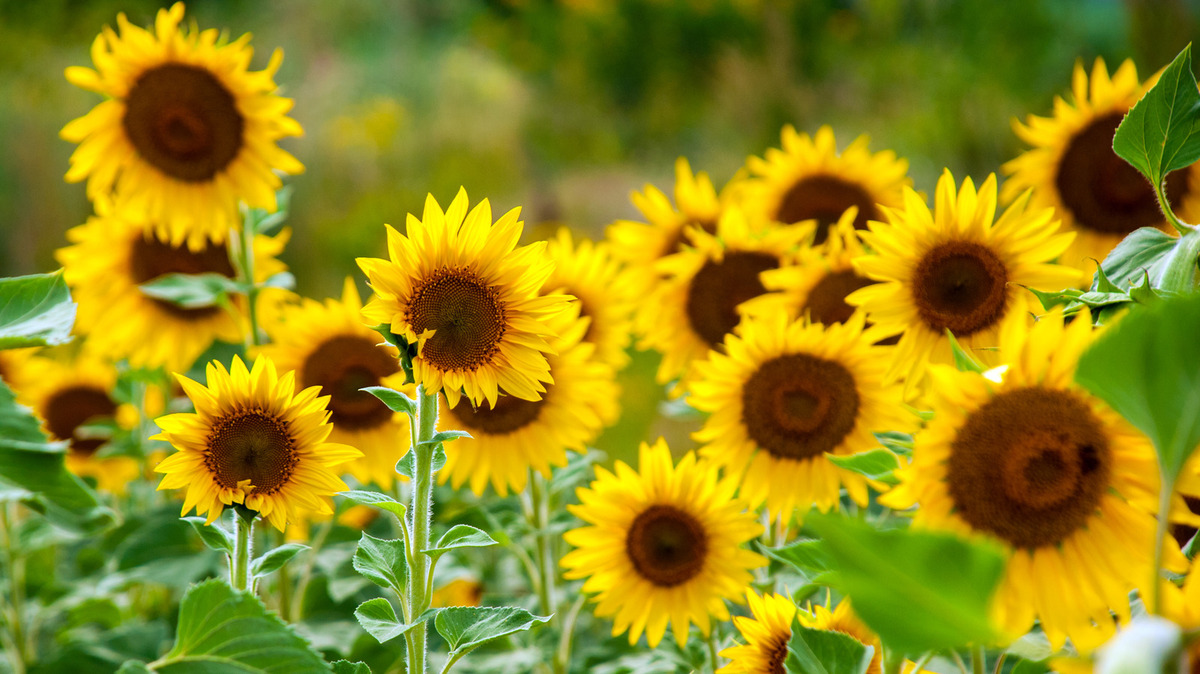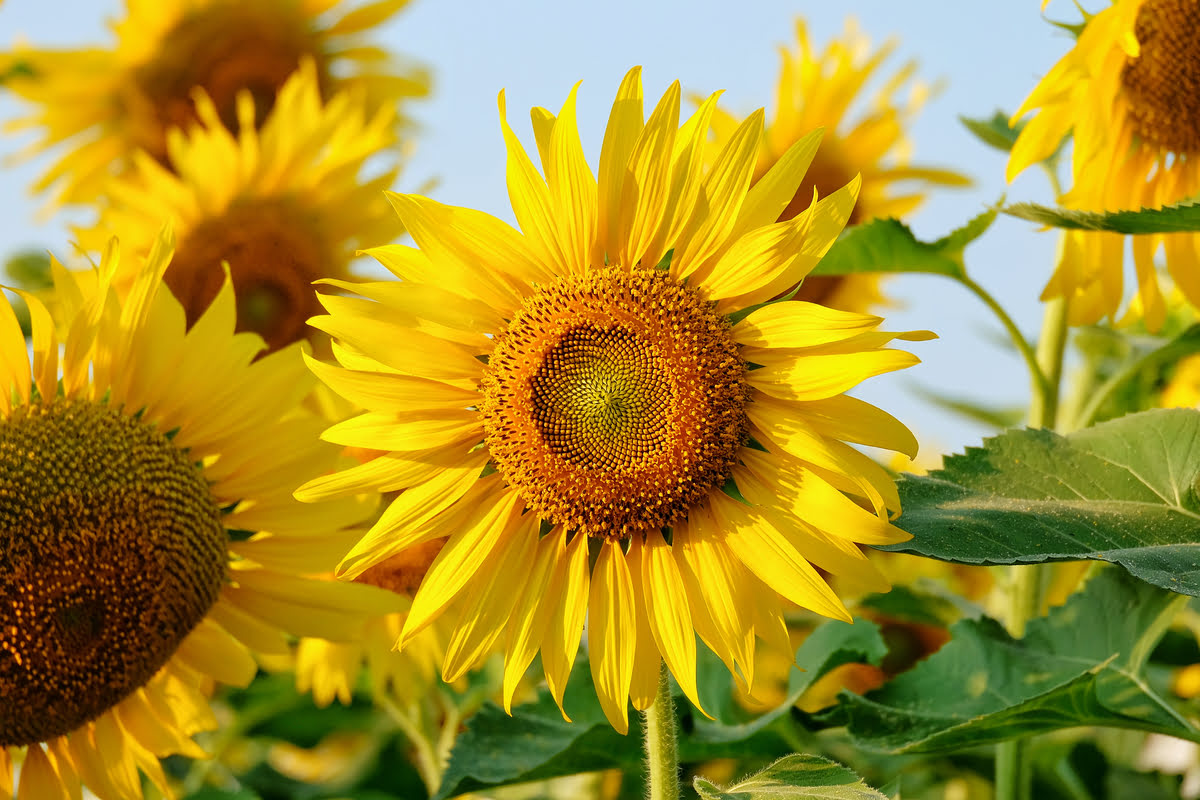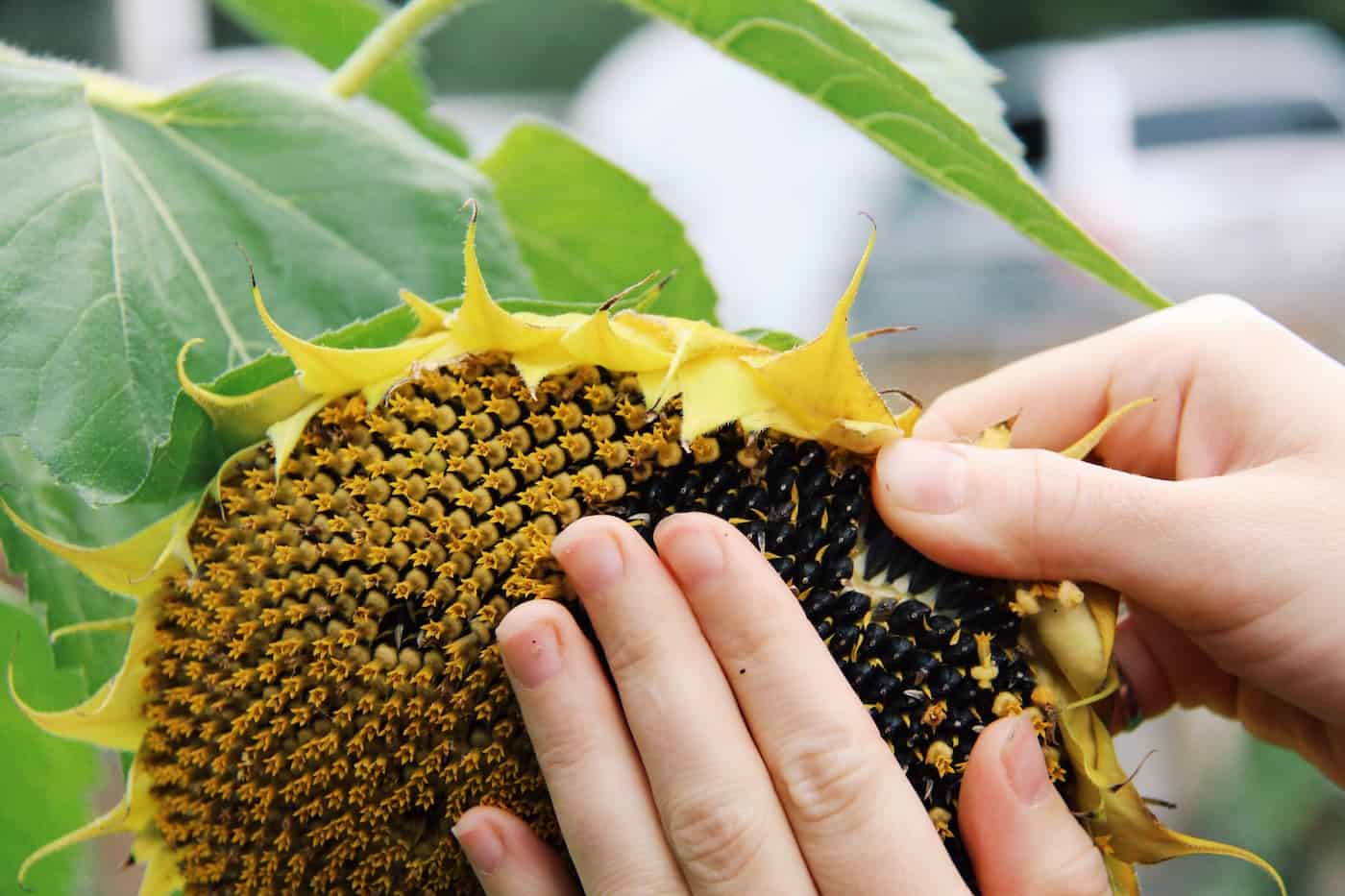Home>Types of Gardening>Ornamental Gardening>When To Pinch Sunflowers


Ornamental Gardening
When To Pinch Sunflowers
Modified: January 22, 2024
Learn when to pinch sunflowers for optimal growth and beautiful blooms in your ornamental garden. Discover the best techniques for promoting healthy, vibrant sunflowers.
(Many of the links in this article redirect to a specific reviewed product. Your purchase of these products through affiliate links helps to generate commission for Chicagolandgardening.com, at no extra cost. Learn more)
Table of Contents
Introduction
Welcome to the world of sunflowers, where these vibrant and majestic blooms grace gardens with their radiant presence. Sunflowers, known for their stunning appearance and symbolic significance, have captivated gardeners and nature enthusiasts for generations. In this article, we will delve into the art of pinching sunflowers, a horticultural practice that can enhance the growth and vitality of these beloved plants.
As we embark on this journey, we will explore the intricacies of sunflower care, shedding light on the optimal conditions for their cultivation and the benefits of pinching. Whether you are a seasoned gardener or a novice with a budding interest in ornamental horticulture, this guide will equip you with valuable insights into the world of sunflowers and the art of pinching, empowering you to nurture thriving blooms in your own garden.
Join us as we uncover the secrets of pinching sunflowers, learning when and how to employ this technique to foster robust growth and abundant blooms. Let's embark on a horticultural adventure that celebrates the beauty and resilience of sunflowers, inviting you to cultivate a deeper appreciation for these iconic flowers and the artistry of ornamental gardening.
Understanding Sunflowers
Before delving into the practice of pinching sunflowers, it is essential to grasp the fundamental characteristics and growth patterns of these magnificent plants. Sunflowers, scientifically classified as Helianthus annuus, are renowned for their strikingly large and vibrant blooms, which exhibit a remarkable ability to track the sun’s movement throughout the day, a phenomenon known as heliotropism.
These resilient flowers are native to North America and have been cultivated for centuries, revered for their cultural significance and diverse applications, ranging from ornamental beauty to culinary utility. Sunflowers typically thrive in full sunlight, requiring well-drained soil and ample space to accommodate their robust growth. Their towering stems, adorned with broad, toothed leaves, provide a sturdy foundation for the development of their iconic flower heads, which house an abundance of seeds coveted for their nutritional value and oil content.
As annual plants, sunflowers follow a distinct growth cycle, germinating from seeds and progressing through vegetative and reproductive stages before culminating in the formation of their radiant blooms. Understanding the lifecycle of sunflowers is crucial for implementing effective care practices, including the strategic application of pinching to optimize their growth and flowering potential.
By gaining insight into the unique characteristics and growth habits of sunflowers, we can cultivate a deeper appreciation for these resilient blooms and the intricacies of nurturing them to their full potential. As we continue our exploration, we will uncover the benefits of pinching sunflowers and elucidate the optimal timing and techniques for this horticultural practice, equipping you with the knowledge to cultivate thriving sunflower displays in your own garden.
Benefits of Pinching Sunflowers
Pinching sunflowers, a strategic horticultural technique, offers a myriad of benefits that contribute to the overall health and vigor of these radiant blooms. By selectively removing the growing tips of young sunflower plants, gardeners can stimulate branching and encourage the development of multiple flower buds, ultimately yielding a more abundant and visually captivating display of blooms.
One of the primary advantages of pinching sunflowers lies in its ability to promote lateral growth, leading to the formation of additional stems and flower heads. This branching effect not only enhances the aesthetic appeal of sunflower plants but also contributes to their structural integrity, reducing the likelihood of stem breakage and bolstering their resilience in adverse weather conditions.
Furthermore, pinching sunflowers can extend the duration of their blooming period, prolonging the enchanting spectacle of their vibrant flowers and enriching the visual allure of garden landscapes. By encouraging the production of multiple flower buds, this technique fosters a prolonged and bountiful flowering season, allowing gardeners to relish the beauty of sunflowers for an extended period.
Additionally, pinching can result in more compact and bushy sunflower plants, making them well-suited for containers or confined garden spaces where vertical height may need to be limited. This adaptability in growth habit enhances the versatility of sunflowers in various gardening contexts, offering greater flexibility in incorporating these captivating blooms into diverse outdoor settings.
By harnessing the benefits of pinching, gardeners can optimize the visual impact and resilience of their sunflower displays, creating a spectacle that embodies the exuberance and vitality of these iconic flowers. As we unravel the art of pinching sunflowers, we will explore the optimal timing and techniques for implementing this practice, empowering you to cultivate thriving sunflower showcases that captivate the senses and inspire admiration.
When to Pinch Sunflowers
Timing is paramount when it comes to pinching sunflowers, as the strategic application of this technique hinges on the developmental stage of the plants. The optimal window for pinching sunflowers occurs when the plants have reached a specific growth stage, typically characterized by the emergence of multiple sets of true leaves and the initial formation of the central stem.
As a general guideline, it is advisable to initiate the pinching process when the sunflower plants have developed 6 to 8 sets of leaves, with the central stem attaining a height of approximately 12 to 18 inches. At this stage, the plants are robust enough to withstand the pinching action, and the lateral branches are in the nascent stages of development, making them responsive to the stimulation of additional growth.
It is important to exercise caution and precision when pinching sunflowers, ensuring that the central growing tip is carefully removed to promote lateral branching without causing undue stress to the plants. By strategically pinching the central stem at the recommended stage of growth, gardeners can effectively channel the plant’s energy into the development of multiple flower buds, setting the stage for a profusion of blooms in the ensuing weeks.
Furthermore, the timing of pinching can influence the duration and intensity of the sunflower blooming period, with early intervention often resulting in a more prolonged and abundant display of flowers. By identifying the opportune moment to implement this technique, gardeners can harness the full potential of their sunflower plants, maximizing their ornamental impact and fostering a visually captivating garden landscape.
As we unravel the nuances of pinching sunflowers, we will delve into the practical aspects of executing this technique with precision and finesse, empowering you to optimize the growth and flowering potential of your sunflower displays. By mastering the art of timing in pinching sunflowers, you can cultivate a vibrant and enduring spectacle of blooms that embodies the exuberance and vitality of these iconic flowers.
How to Pinch Sunflowers
Executing the pinching technique with precision is essential to harnessing its full potential in enhancing the growth and blooming capacity of sunflowers. When embarking on the process of pinching, it is crucial to adopt a meticulous approach that minimizes stress on the plants while effectively stimulating lateral branching and bud development.
The key to successful pinching lies in identifying the central growing tip of the sunflower plant, which is typically characterized by its vertical orientation and vigorous growth. Using a clean and sharp pair of pruning shears or scissors, carefully remove the central growing tip, ensuring a clean and precise cut that minimizes damage to the surrounding tissues. It is advisable to position the cut just above a set of leaves or lateral bud, allowing the plant to redirect its energy towards the development of new branches and flower buds.
When executing the pinching action, it is important to exercise restraint and avoid excessive removal of foliage or stems, as this can compromise the overall health and vigor of the plant. By selectively targeting the central growing tip and maintaining the integrity of the surrounding foliage, gardeners can effectively promote lateral growth and encourage the emergence of multiple flower buds, enriching the visual impact of the sunflower display.
Following the pinching process, it is beneficial to monitor the plants closely and provide adequate care to support their recovery and subsequent growth. This includes ensuring optimal watering, providing sufficient sunlight, and addressing any nutritional deficiencies that may impede the plant’s ability to capitalize on the pinching-induced stimulation of growth.
By adhering to these guidelines and approaching the pinching process with attentiveness and precision, gardeners can unlock the transformative potential of this horticultural technique, cultivating sunflower displays that exude vitality and abundance. As we delve into the practical aspects of pinching sunflowers, we will equip you with the knowledge and confidence to execute this technique with finesse, empowering you to nurture thriving sunflower showcases that captivate the senses and enrich the garden landscape.
Conclusion
As we conclude our exploration of pinching sunflowers, we have unveiled the artistry and science behind this horticultural practice, illuminating its capacity to enrich the growth and blooming potential of these iconic flowers. By strategically employing the technique of pinching, gardeners can stimulate lateral branching, encourage the development of multiple flower buds, and extend the duration of the sunflower blooming season, ultimately fostering a more abundant and visually captivating display of blooms.
Understanding the optimal timing and precise execution of pinching is pivotal to maximizing its benefits and minimizing stress on the plants. By identifying the opportune stage of growth and carefully removing the central growing tip, gardeners can set the stage for a profusion of vibrant blooms that embody the exuberance and resilience of sunflowers.
Throughout this journey, we have delved into the unique characteristics and growth habits of sunflowers, gaining insight into their lifecycle and the conditions conducive to their thriving. By cultivating a deeper understanding of sunflowers and the art of pinching, gardeners can nurture thriving displays that captivate the senses and enrich the garden landscape with their radiant beauty.
As you embark on your own horticultural adventure with sunflowers, may this guide serve as a source of inspiration and guidance, empowering you to cultivate vibrant and enduring spectacles of blooms that celebrate the vitality and splendor of these beloved flowers. Embrace the art of pinching sunflowers as a transformative tool in your gardening repertoire, and witness the abundant rewards unfold in your garden, painting a tapestry of color and vibrancy that reflects the timeless allure of these iconic blooms.
With each pinched sunflower, may you cultivate a flourishing oasis that beckons admiration and rekindles a profound appreciation for the artistry of ornamental gardening. Let the vibrant blooms stand as a testament to your nurturing care and the transformative power of horticultural techniques, inspiring awe and delight in all who behold them.
